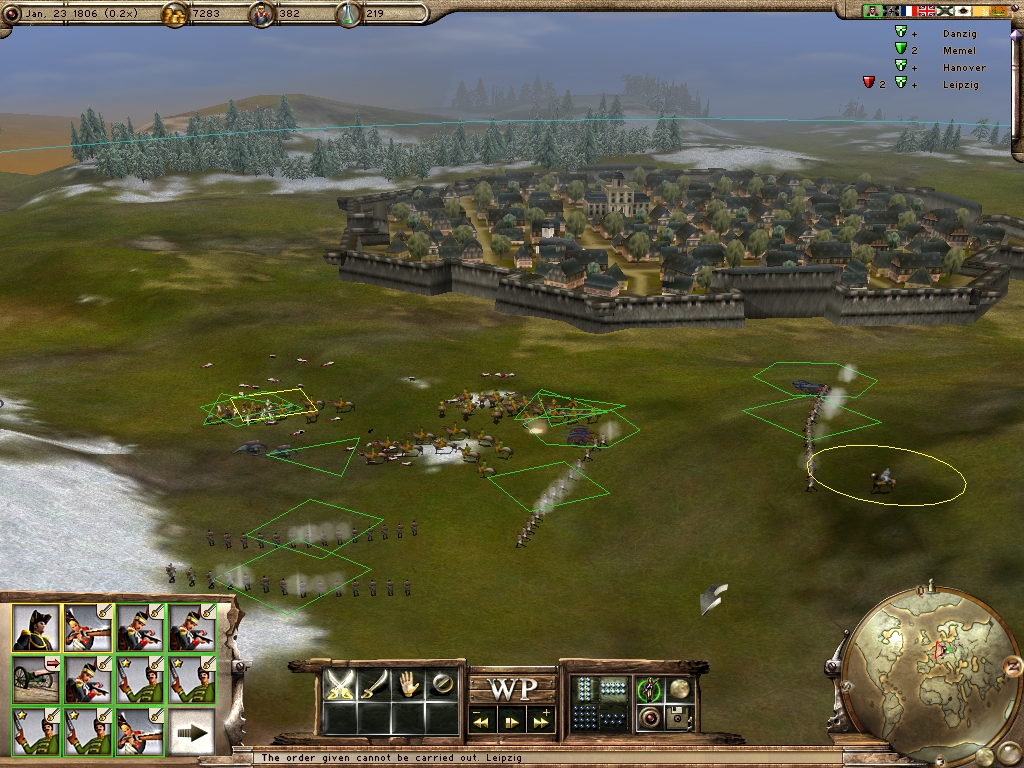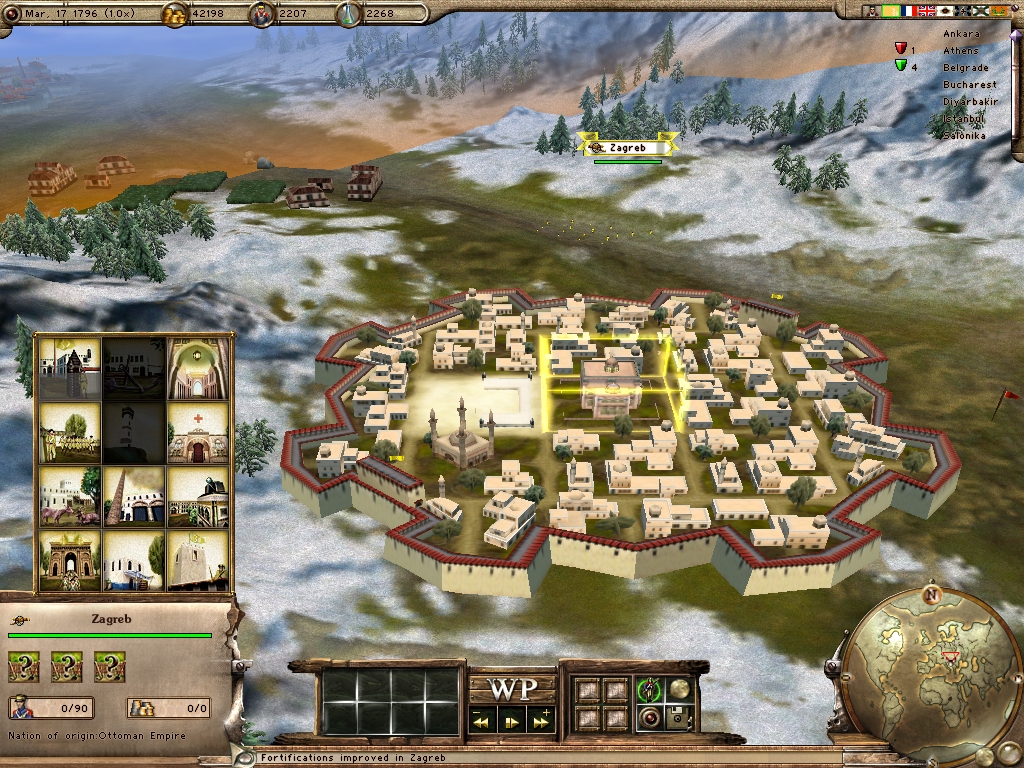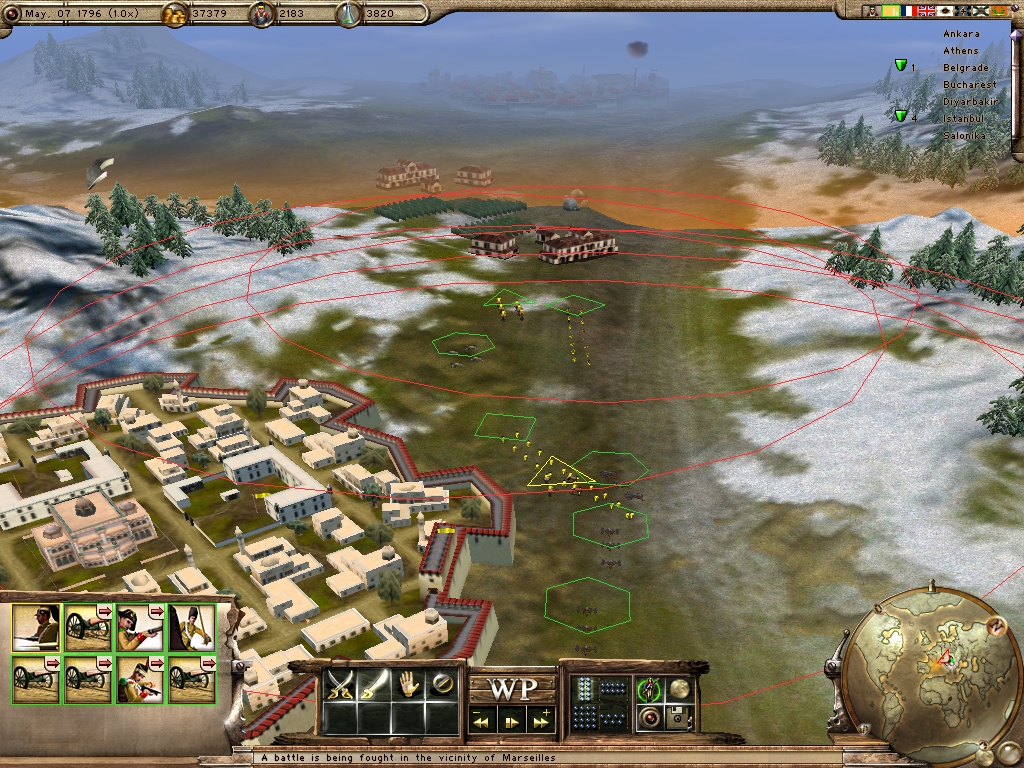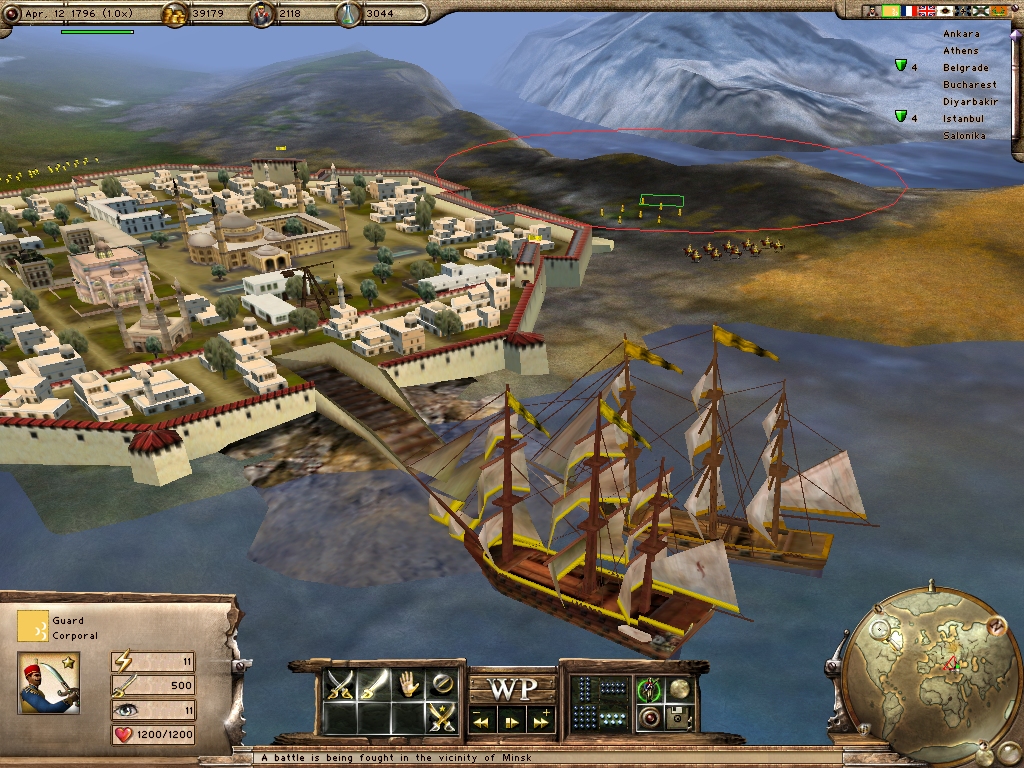I’ve written hundreds of reviews, previews, and retrospectives during my twenty-odd years as a games inspector. As many of these appeared in the British version of PC Gamer magazine and nowhere else, now and again something from my archive may appear as one of THC’s daily posts. Pyro Studios wasn’t the only outfit to ‘Total War’ the Napoleonic era before Creative Assembly got around to it. Two years before Imperial Glory appeared, Microids released a NTW foreshadower called War and Peace.
The melodic magic of ’70s super troupers Abba is rightly celebrated, but the startling depth and subtlety of Benny and Bjorn’s lyrics sometimes goes unrecognised. Take their 1974 Eurovision smash Waterloo, for example. You don’t have to be Richard Holmes to realise that lines like “Waterloo – Couldn’t escape if I wanted to…” contain coded references to the timely arrival of fresh Prussian troops on Wellington’s left flank, and the destruction of the Little Corporal’s elite Imperial Guard in the last gasp assault of the Hougoumont ridge.

It’s this level of military insight and authority that’s missing from War and Peace – a Total War-style historical RTS set during the turbulent 20-year Napoleonic period. Combat for pre-set cities is conducted on a single dramatically condensed 3D world map in which a march from Vienna to Moscow takes minutes rather than months. The miniscule sprite sprite-rendered soldiery have a decent selection of formations, aggression stances, and special attacks at their disposal, but, with no attempt to model morale or terrain effects, battles lack both the sophistication and the spectacle delivered by Shogun and its successor.

Along with battlefield simplifications and woefully shrunken unit graphics, a slightly stingy unit cap (60 land plus 60 naval) and mysteriously absent multiplayer element suck at the hooves of the War and Peace cavalry charge like the rain-softened mud that hindered horsemen on the fateful day in 1815. Fortunately, though, this is a game with enough momentum to press home the attack. More accessible and fluent than the Europa Universalis series with which it shares some historical common ground, its absorbing, well-balanced blend of economics, research, diplomacy and militarism combine with a reasonably credible enemy AI to cultivate just the kind of ‘I am the King of Spain’ delusions that Kieron described in his Medieval: Total War review.

Leading Spain is actually out of the question, but carving up up the globe on behalf of Britain, France, Pussia, Russia, Austria or the Ottomans is possible. Besides a single unique unit type, there are few if any material differences between the six superpowers. This is less significant than it sounds, as the territorial and diplomatic circumstances in place at the start of each of the eight historical scenarios create plenty of variety. Playing these or the fictional blank canvas campaigns , there’s the opportunity to add further individuality to games with configurable victory conditions.

Although there are obviously finer bits of historical strategy fare available, Josephine’s words to Bonaparte on th eve of the battle of Austerlitz would not be out of place as parting purchasing advice: “If you’re all alone when the pretty birds have flown, honey I’m still free. Take a chance on me.”

